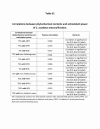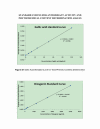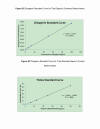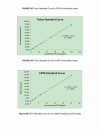Cosmos caudatus extract/fractions reduce smooth muscle cells migration and invasion in vitro : A potential benefit of suppressing atherosclerosis
- PMID: 32258785
- PMCID: PMC6806747
- DOI: 10.1016/j.pbj.2017.03.008
Cosmos caudatus extract/fractions reduce smooth muscle cells migration and invasion in vitro : A potential benefit of suppressing atherosclerosis
Abstract
Highlights: Cosmos caudatus Ethanolic extract fractionation by n-butanol produced a phenolics-saponin rich fraction.Cosmos caudatus butanol fraction was the most potent in all antioxidant and MTT assays.High concentrations of all fractions increased cells migration and invasion in vitro.Butanol fraction intermediate concentration maximally inhibited VSMC migration and invasion.Mild concentrations of crude and butanol fractions showed the best invasion inhibition index.
Background: Cosmos caudatus Kunth is a medicinal herb used traditionally in Latin America and South East Asia to retard aging, rigidify bones and for several cardiovascular uses.
Objective: Is to assess C. caudatus extract/fractions' antioxidant and vascular smooth muscle cells (VSMC) migration and invasion inhibition capacity in vitro.
Methods: Cosmos caudatus shoots were extracted by cold maceration in 50% ethanol to produce crude (CEE), and then the extract was fractionated to butanol (Bu.F), and aqueous fractions (Aq.f). Phenolics and saponins were quantified in extract and fractions by colorimetric methods and their antioxidant capacity was assayed in four different tests. Cytotoxic effect and safety level concentrations were determined for the fractions by using MTT assay. Migration and invasion inhibitory potential were measured in vitro at three different concentrations equivalent to (IC10, IC25, and IC50). Finally, invasion inhibitory index was calculated to obtain the best fraction(s) that show(s) the highest ratio of cell invasion inhibition to the total cell migration inhibition.
Results: Butanol fraction yield was the lowest; nevertheless, its phytochemical contents, antioxidant activities as well as its potency were the highest. Unlike other fractions, Bu.F was strongly correlated with all antioxidant assays experimented. In addition, it has the highest inhibitory effect at IC25 against VSMCs migration and invasion that accounts for 53.93% and 59.94% respectively. Unexpectedly, Bu.F and CEE at IC10 displayed the highest invasion inhibitory index (approx. 68%).
Conclusion: Butanol fraction of C. caudatus offers a potentiality for the discovery of new leads for preventing atherosclerosis.
Keywords: Antioxidant; Atherosclerosis; Cosmos caudatus; Invasion; Migration.
Copyright 2017 PBJ-Associação Porto Biomedical/Porto Biomedical Society.
Conflict of interest statement
The authors declare no conflicts of interest.
Figures














Similar articles
-
Development on potential skin anti-aging agents of Cosmos caudatus Kunth via inhibition of collagenase, MMP-1 and MMP-3 activities.Phytomedicine. 2023 Feb;110:154643. doi: 10.1016/j.phymed.2023.154643. Epub 2023 Jan 2. Phytomedicine. 2023. PMID: 36623444
-
Antioxidant potential, total phenolic and total flavonoid contents of Rhododendron anthopogonoides and its protective effect on hypoxia-induced injury in PC12 cells.BMC Complement Altern Med. 2015 Aug 18;15:287. doi: 10.1186/s12906-015-0820-3. BMC Complement Altern Med. 2015. PMID: 26283543 Free PMC article.
-
Aldose reductase inhibition of a saponin-rich fraction and new furostanol saponin derivatives from Balanites aegyptiaca.Phytomedicine. 2015 Aug 15;22(9):829-36. doi: 10.1016/j.phymed.2015.05.059. Epub 2015 Jun 20. Phytomedicine. 2015. PMID: 26220630
-
Variation in the metabolites and α-glucosidase inhibitory activity of Cosmos caudatus at different growth stages.BMC Complement Altern Med. 2019 Sep 5;19(1):245. doi: 10.1186/s12906-019-2655-9. BMC Complement Altern Med. 2019. PMID: 31488132 Free PMC article.
-
Potential medicinal benefits of Cosmos caudatus (Ulam Raja): A scoping review.J Res Med Sci. 2015 Oct;20(10):1000-6. doi: 10.4103/1735-1995.172796. J Res Med Sci. 2015. PMID: 26929767 Free PMC article.
Cited by
-
Cassava (Manihot esculenta Crantz): A Systematic Review for the Pharmacological Activities, Traditional Uses, Nutritional Values, and Phytochemistry.J Evid Based Integr Med. 2023 Jan-Dec;28:2515690X231206227. doi: 10.1177/2515690X231206227. J Evid Based Integr Med. 2023. PMID: 37822215 Free PMC article.
-
AGS Gastric Cells: Antioxidant Activity and Metabolic Effects of Phenolic Extracts from Different Monocultivar Virgin Olive Oils.Antioxidants (Basel). 2023 Jun 27;12(7):1347. doi: 10.3390/antiox12071347. Antioxidants (Basel). 2023. PMID: 37507887 Free PMC article.
References
-
- Marín-García J. Molecular determinants of atherosclerosis. Marín-García J, editor. Post-genomic cardiology. Second Edition Boston: Academic Press; 2014: pp. 183-215.
-
- Catapano AL, Wiklund O. Think again about cholesterol survey. Atheroscl Suppl. 2015;20:1-5. - PubMed
-
- Ionita MG, Arslan F, De Kleijn DP, Pasterkamp G. Endogenous inflammatory molecules engage Toll-like receptors in cardiovascular disease. J Innate Immun. 2010;2:307-315. - PubMed
-
- Quattrocchi U. 2012. CRC World Dictionary of Medicinal and Poisonous Plants: Common Names, Scientific Names, Eponyms, Synonyms, and Etymology, 5th ed. CRC Press, New York.
LinkOut - more resources
Full Text Sources
